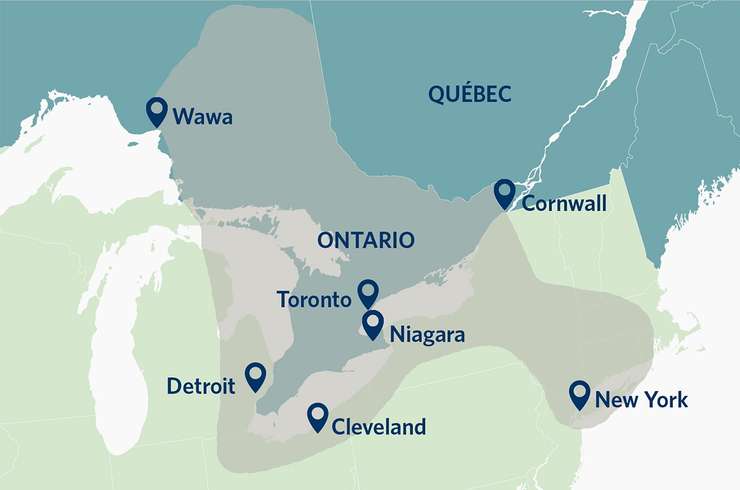Where were you that day? Were you driving when the lights went out? Trapped inside an elevator? Camping and completely unaware?
At 4:11 p.m. on August 14, 2003, approximately 55 million North Americans found themselves without power.
The widespread outage stretched across parts of Ontario, Michigan, Ohio, Connecticut, Pennsylvania, Massachusetts, New Jersey, and New York.

Most people can remember exactly where they were when everything ground to a halt, be it at home, at work, or on vacation.
But no one had an experience quite like Kim Warren.
Warren was the manager of the main control centre for Ontario’s power grid on that fateful day.
In an interview he told the Toronto Star, "This was the entire power system imploding, falling down. That wallboard we have was lit up like a Christmas tree." He added that it only took 90 seconds for the whole grid to go down.
He then asked the senior controller in the room "Is this real?"
It was.
During the first two hours of the blackout, speculation ran rampant.
New York's governor, George Pataki, blamed the power outage on Canada.
CNN said the Niagara-Mohawk power grid was overloaded.
Jean Chrétien, Canada's Prime Minister at the time, stated that lightning had struck a power plant in northern New York. While Canadian Defence Minister, John McCallum, blamed an outage at a nuclear plant in Pennsylvania.
The president of the North American Electric Reliability Corporation said that the problem originated in Ohio.
In the end, it was found that mother nature and the Ohio-based FirstEnergy Corporation were at fault.
Power lines coming into contact with overgrown trees caused a FirstEnergy plant in Cleveland to shut down. This combined with a technical glitch caused a cascading effect that ultimately forced the shutdown of at least 265 power plants.
Ontario's Independent Electricity System Operator (IESO) said that nearly all electricity service east of Wawa went down, with only small pockets of electricity service remaining in the province.
Nearly 100 deaths were attributed to the blackout.
This includes a 16-year-old boy in Guelph who was hit by a car when riding his bike home on the dark streets with no light and no helmet.
Most affected places in both Canada and the US restored power within four to eight hours. This includes parts of Toronto, Mississauga, and London. Other parts of southwestern Ontario, especially those near Bruce Power, also regained power rather quickly.
Ontario's power system was restored within 30 hours, but a state of emergency was in effect until August 22.
Conservation was critical during this time, as the province's generation fleet was brought back to full production capability.
According to the IESO, before the blackout, mandatory reliability standards only existed in Ontario.
After the blackout, a Canada-US Task Force was formed to identify the causes of the outage and seek recommendations to help prevent blackouts from happening in the future.
The task force's final report identified 46 specific technical and policy recommendations for minimizing or preventing future blackouts.
As a result, there are now clear roles and responsibilities, and reliability requirements set out for North America's electric system.
For more about 2003's massive blackout, tune into the upcoming episode of the 519 Podcast.